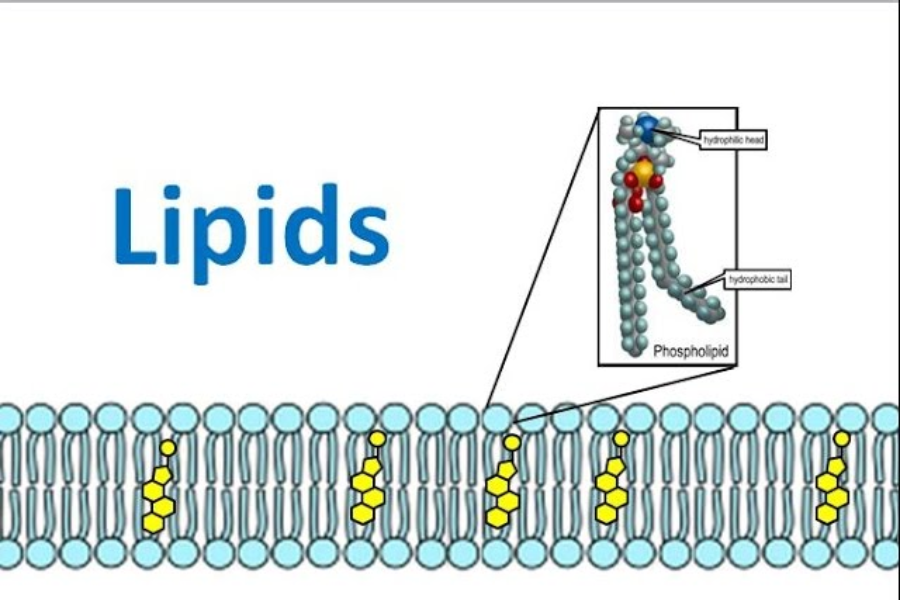The Complete Liptids Handbook: Unlocking the Potential of Lipids for Wellness and Health
In the dynamic world of health and wellness, understanding essential components that influence our well-being is paramount. One such component is Liptid, a term that refers to the diverse class of organic molecules known as lipids. Lipids play vital roles in cellular functions, energy storage, and health. This guide explores Liptids in depth—their types, functions, benefits, and impact on health, skincare, and medicine. Whether you want to improve your diet, optimize your skincare routine, or understand lipid metabolism, this article will provide a comprehensive overview.
What are Liptids?
Liptids, synonymous with lipids, are organic compounds composed primarily of carbon, hydrogen, and oxygen. They are hydrophobic, meaning they do not dissolve in water, making them essential components of biological membranes and energy reserves. Lipids exist in various forms, such as fats, oils, waxes, and certain vitamins.
These molecules serve multiple purposes: from forming the structural backbone of cells to acting as signaling molecules and energy sources. Lipids are crucial for heart health, brain function, skin hydration, and immune responses. Understanding the different types of Liptids helps us appreciate their role in human health.
Types of Liptids
1. Phospholipids
- Structure and Function: Phospholipids consist of two fatty acids, a glycerol molecule, and a phosphate group. They have hydrophilic (water-loving) heads and hydrophobic (water-repelling) tails, making them ideal for forming cell membranes.
- Role in Cell Membranes: These lipids create a bilayer structure that regulates the entry and exit of substances, ensuring cell integrity and function.
2. Triglycerides
- Energy Storage: Triglycerides are composed of three fatty acids attached to a glycerol backbone. They store more than twice the energy per gram compared to carbohydrates, making them the body’s most efficient energy reservoir.
- Sources and Metabolism: Found in oils, butter, and fatty foods, triglycerides are broken down by enzymes into glycerol and fatty acids for energy production.
3. Steroids
- Hormonal Functions: Steroids are lipids that include hormones like cholesterol, testosterone, and cortisol. These hormones regulate metabolism, immune responses, and reproductive functions.
- Examples: Cholesterol is essential for cell membrane stability and hormone production, while testosterone plays a key role in muscle growth and bone density.
4. Waxes
- Protective Role: Waxes are lipids that serve as protective barriers. In plants, they prevent water loss, while in animals, waxes protect against external elements.
Functions of Liptids
1. Capabilities for Energy Storage
Among macronutrients, lipids offer the highest energy yield. Lipids are necessary for long-term energy storage because they provide more than twice as much energy as carbohydrates.
2. Structural Role in Cell Membranes
Cholesterol and phospholipids play a role in the structure of cell membranes by keeping them fluid and making it easier for substances to enter and leave cells. This primary respectability is basic for cell endurance and capability.
3. Function as Chemical Messagers
Steroid hormones derived from lipids regulate processes like metabolism, growth, and reproduction.
4. Impact on Health (Heart and Brain Function)
Heart and brain function are dependent on lipids. Omega-3 fatty acids, for instance, are known to support cognitive performance while also reducing inflammation and improving heart health.
Health Benefits of Liptids
1. Cardiovascular Health
Omega-3 fatty acids found in fish oil, flaxseeds, and walnuts lower LDL cholesterol and blood pressure, reducing the risk of heart disease.
2. Brain Health
DHA, an omega-3 fatty acid, is a structural component of the brain and retina, essential for cognitive function and reducing inflammation in the brain.
3. Essential Fatty Acids
Since the body cannot produce omega-3 and omega-6 fatty acids, they must be obtained through diet. A balanced intake of these fatty acids supports immunity and reduces inflammation.
Nutritional Sources of Liptids
Healthy lipid sources include:
- Fatty Fish: Rich in EPA and DHA, essential for heart and brain health.
- Nuts and Seeds: Walnuts, flaxseeds, and chia seeds provide plant-based omega-3s.
- Avocados and Olive Oil: High in monounsaturated fats, they support heart health and reduce inflammation.
Incorporating these foods into your diet can promote cardiovascular health, cognitive function, and overall well-being.
Liptids in Skincare
Lipids play a crucial role in skincare by:
- Hydrating the Skin: Lipids form a barrier that prevents moisture loss, keeping the skin supple.
- Reducing Inflammation: Lipids with anti-inflammatory properties soothe irritated skin and reduce redness, benefiting conditions like eczema and psoriasis.
- Protecting Against Environmental Damage: Lipids shield the skin from pollutants and harsh weather.
- Enhancing Skin Elasticity: Lipids improve skin firmness, reducing wrinkles and promoting a youthful appearance.
Environmental Impact of Liptids
Because natural lipids biodegrade, they are better for the environment than artificial ones. its natural decomposition lessens its ecological imprint. Lipids are necessary for species’ energy demands and are important components of food chains in ecosystems.
Liptids in Pharmaceuticals
Drug absorption and delivery are improved by lipids. Liposomal drug delivery methods encapsulate drugs using lipids to increase their stability and efficacy. The absorption of fat-soluble vitamins and other nutrients is also facilitated by lipids.
Common Misconceptions About Liptids
- All Fats Are Bad: Not all fats are harmful. Healthy fats, like monounsaturated and polyunsaturated fats, are essential for well-being.
- Fats Cause Weight Gain: Consuming healthy fats in moderation does not necessarily lead to weight gain. In fact, they are crucial for hormone production and cell function.
- Eliminating Fats Is Healthy: Removing all fats from your diet can result in nutrient deficiencies and negatively impact health.
Future Prospects and Research
Ongoing research continues to uncover new applications for lipids, including advanced drug delivery systems and dietary supplements. Future developments may reveal additional benefits for skincare, pharmaceuticals, and overall health.
Conclusion
Liptids, or lipids, are essential to life, impacting everything from cellular function to heart health and brain activity. Whether through their role in energy storage, hormone regulation, or skincare, lipids contribute significantly to human health. Incorporating healthy sources of lipids into your diet and skincare routine can enhance well-being and promote longevity.
FAQs
What are Liptids?
Liptids, or lipids, are organic compounds that include fats, oils, waxes, and vitamins. They are crucial for energy storage, cell structure, and overall health.
How do Liptids affect health?
Liptids support cardiovascular health, brain function, and inflammation control. They are also necessary for fat-soluble vitamin absorption.
What are some good sources of healthy Liptids?
Fatty fish, nuts, seeds, avocados, and olive oil are excellent sources of healthy lipids.
Are all Liptids bad for you?
No. Healthy fats, like monounsaturated and polyunsaturated fats, are essential for health. However, trans fats and excessive saturated fats should be limited.
How can Liptids be used in skincare?
Liptids in skincare products moisturize the skin, reduce inflammation, and protect against environmental damage.






